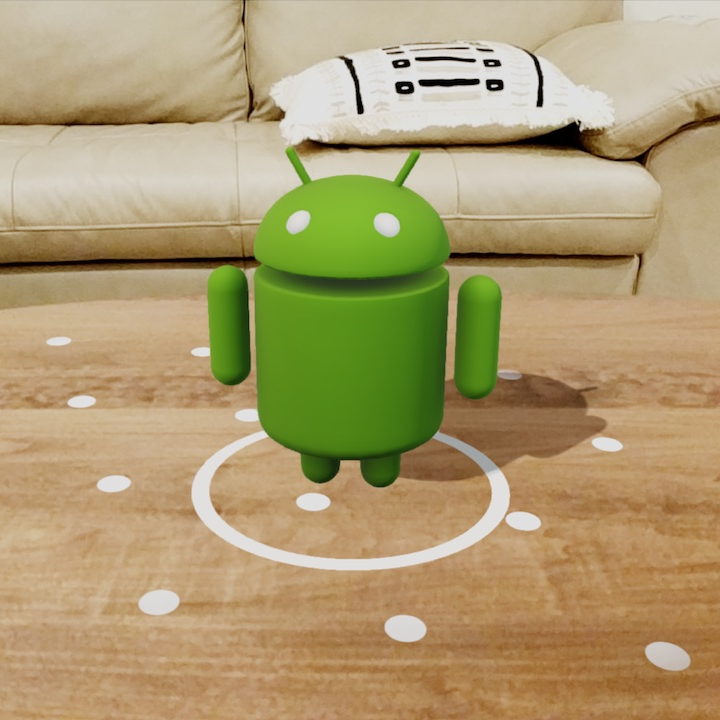Augmented Reality
Augmented Reality (AR for short) describes the real-time combination of real-world input with virtual enhancements. This usually happens by displaying real-life camera footage and displaying virtual objects in it. A very commonly known example is the application “Pokémon Go”, where it is possible to see virtual creatures (augmented) in the real world. AR can commonly be used either on a handheld device, like a smartphone or tablet, or on a head mounted device like the HoloLens.
In our project, both kinds of devices can be used in an approach to achieve interoperability and a wider selection of interaction possibilities. The handheld devices are limited to Android-capable ones, since we used ARCore for its advanced features.

ARCore offers so-called “plane detection” which is the possibility to scan a room with the smartphone camera and detect any planes. On these planes, objects can be placed and they will be displayed in the chosen position even if the user moves around. For this, special sensors are necessary, but luckily, most modern smartphones are equipped with these.
For the head-mounted device we use the HoloLens in combination with the MRTK, a toolkit for head mounted AR. The MRTK enables us to use, among other features, hand gestures or even eye tracking, offering new interaction possibilities.